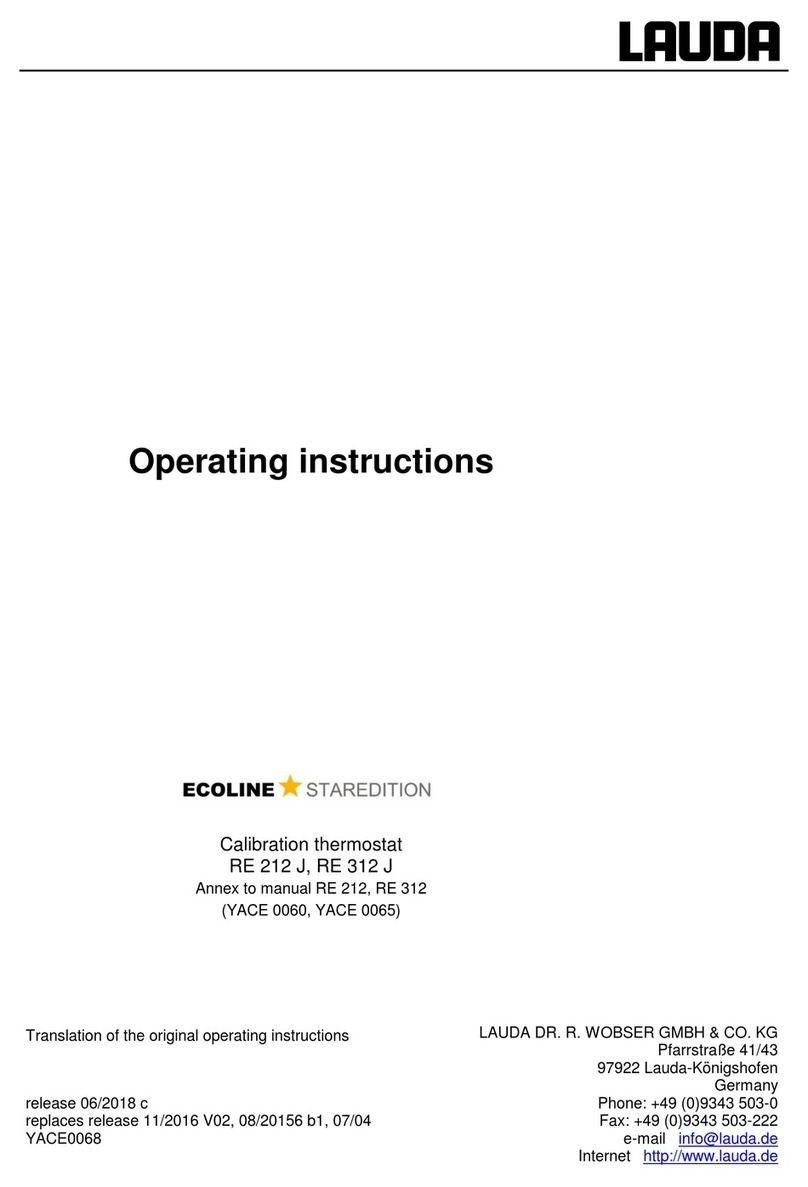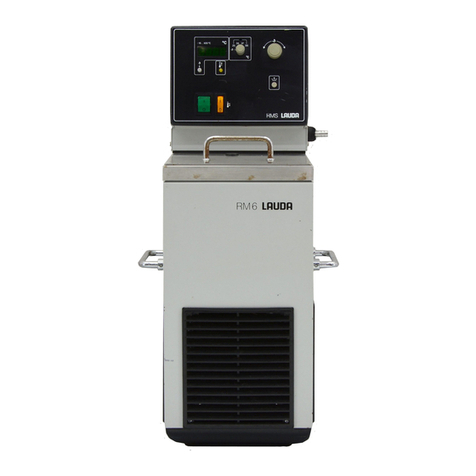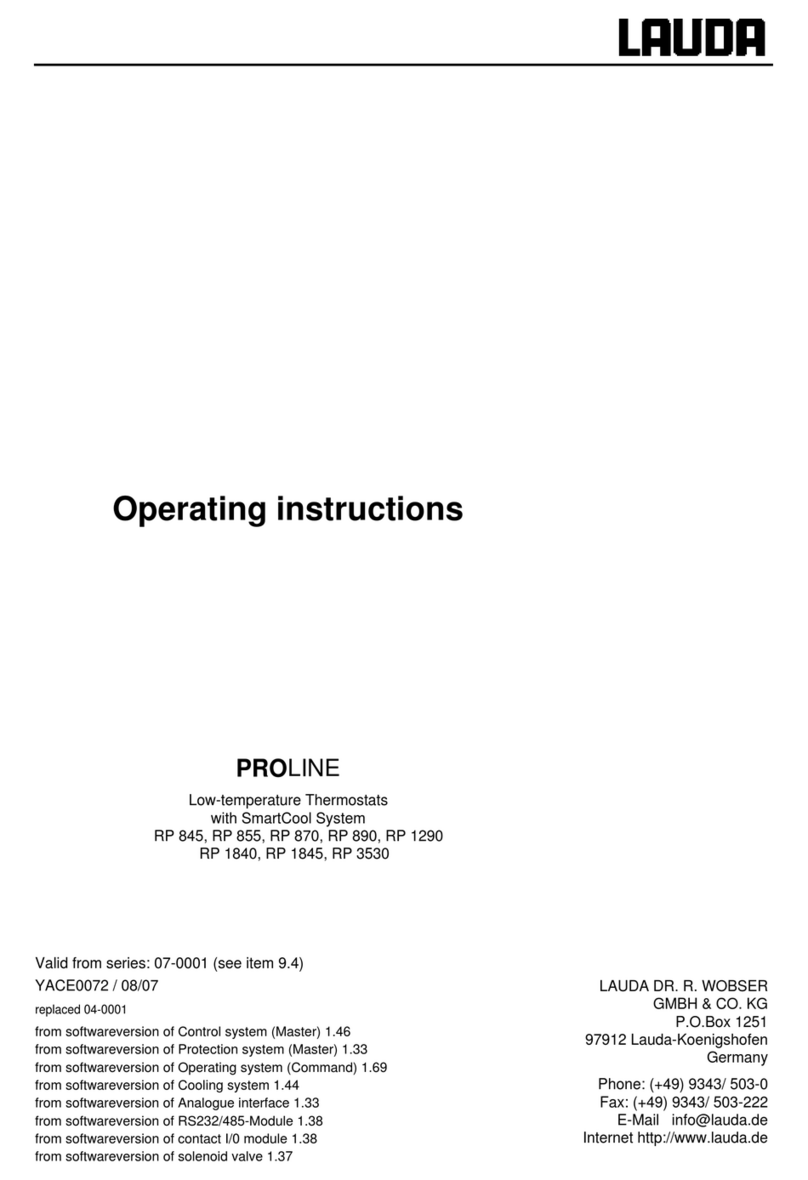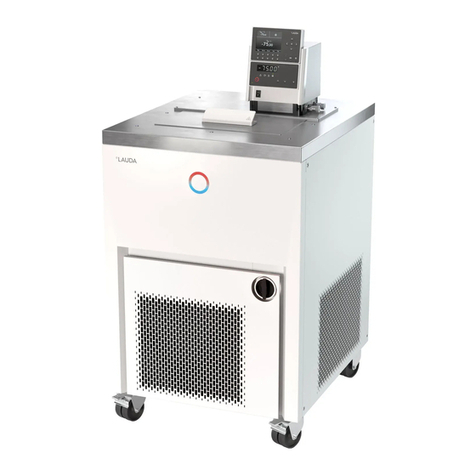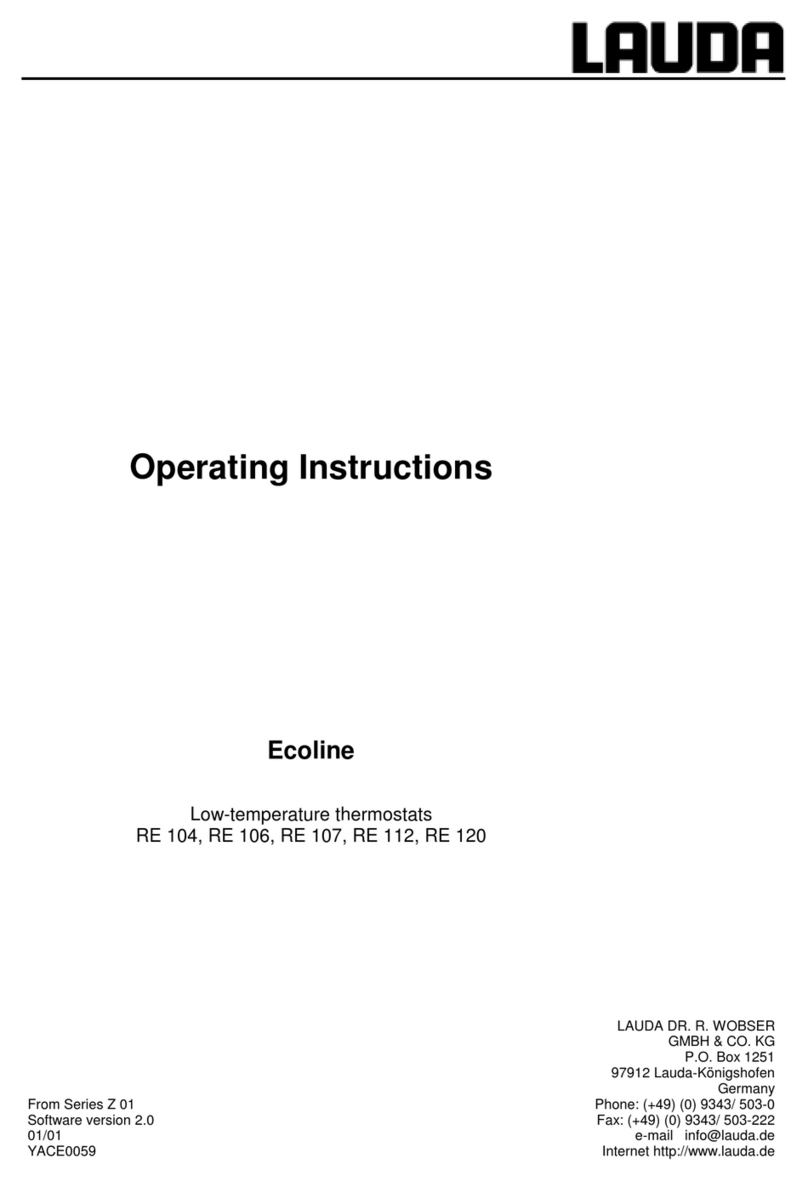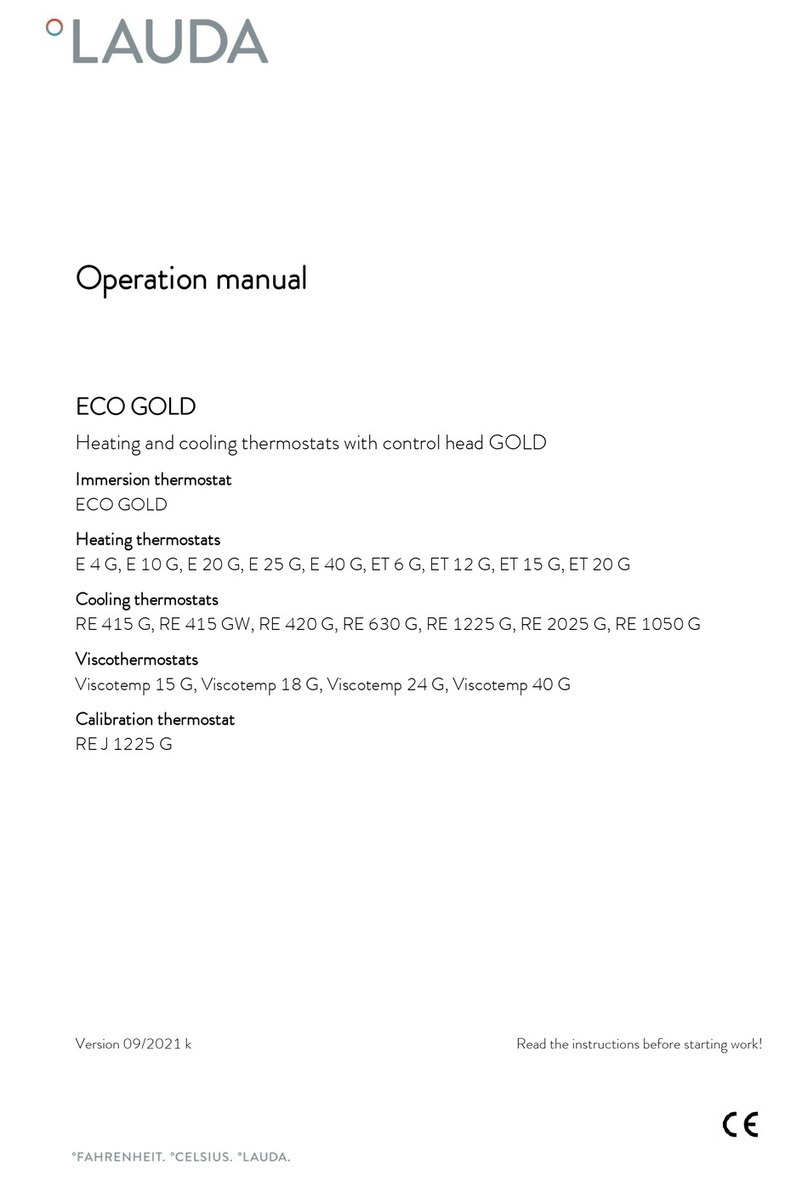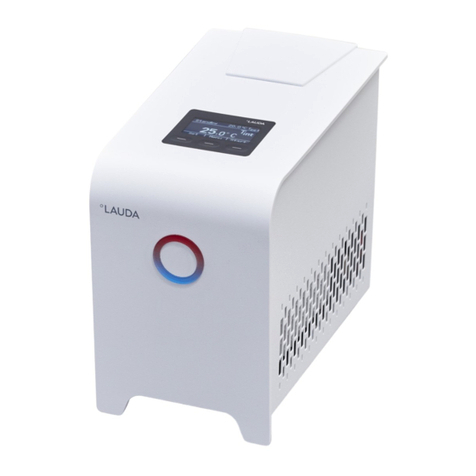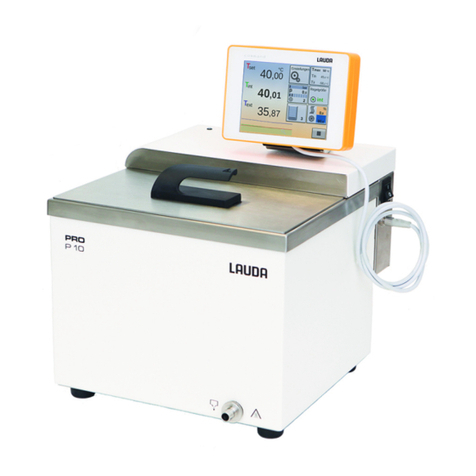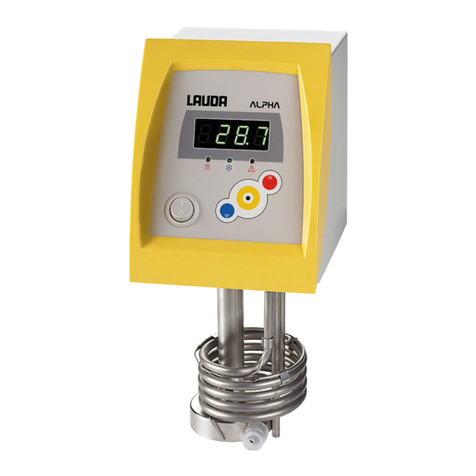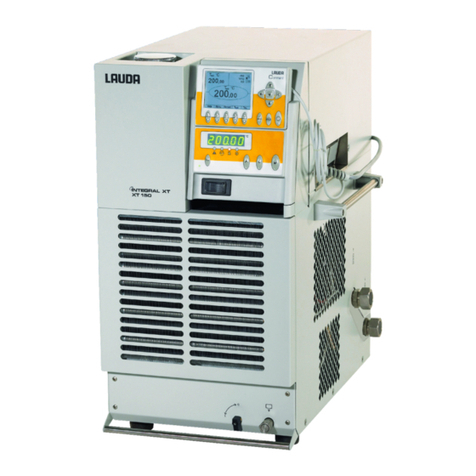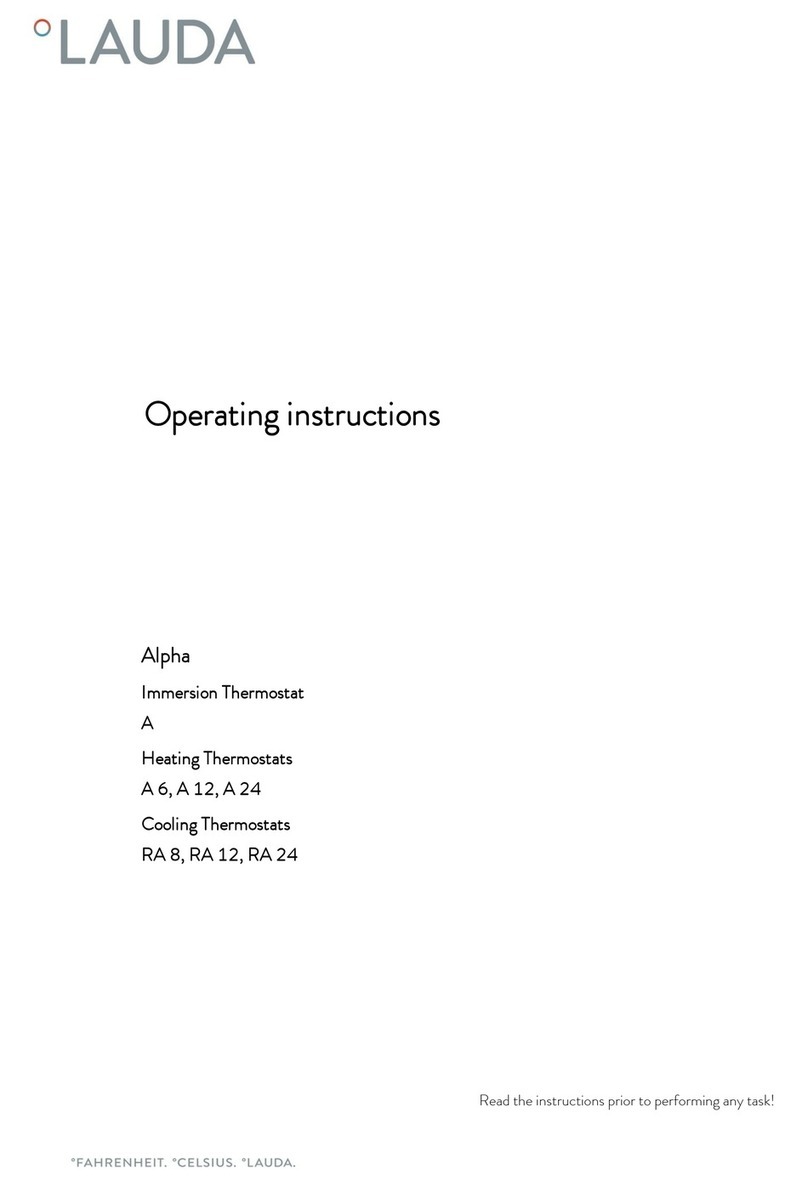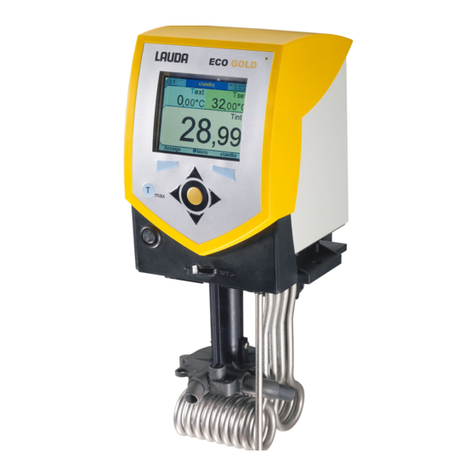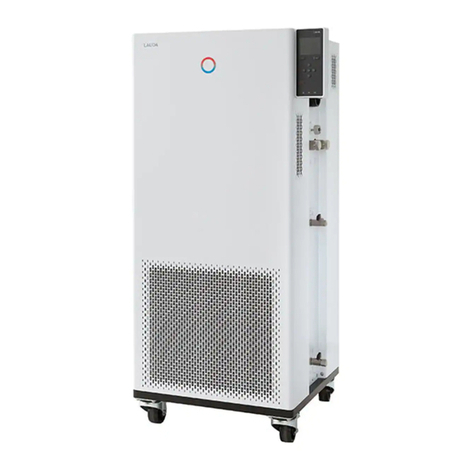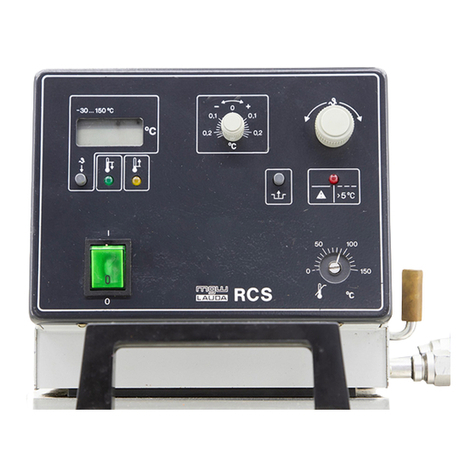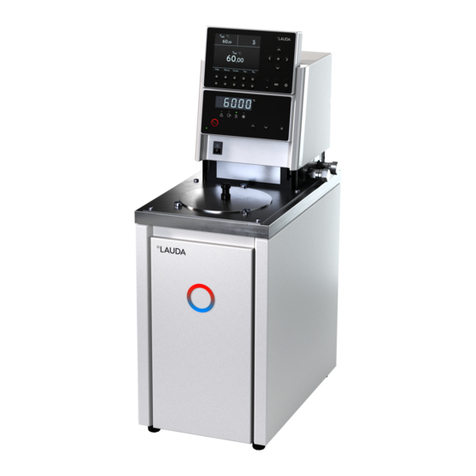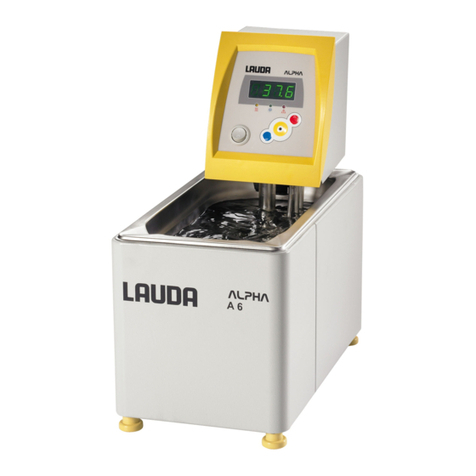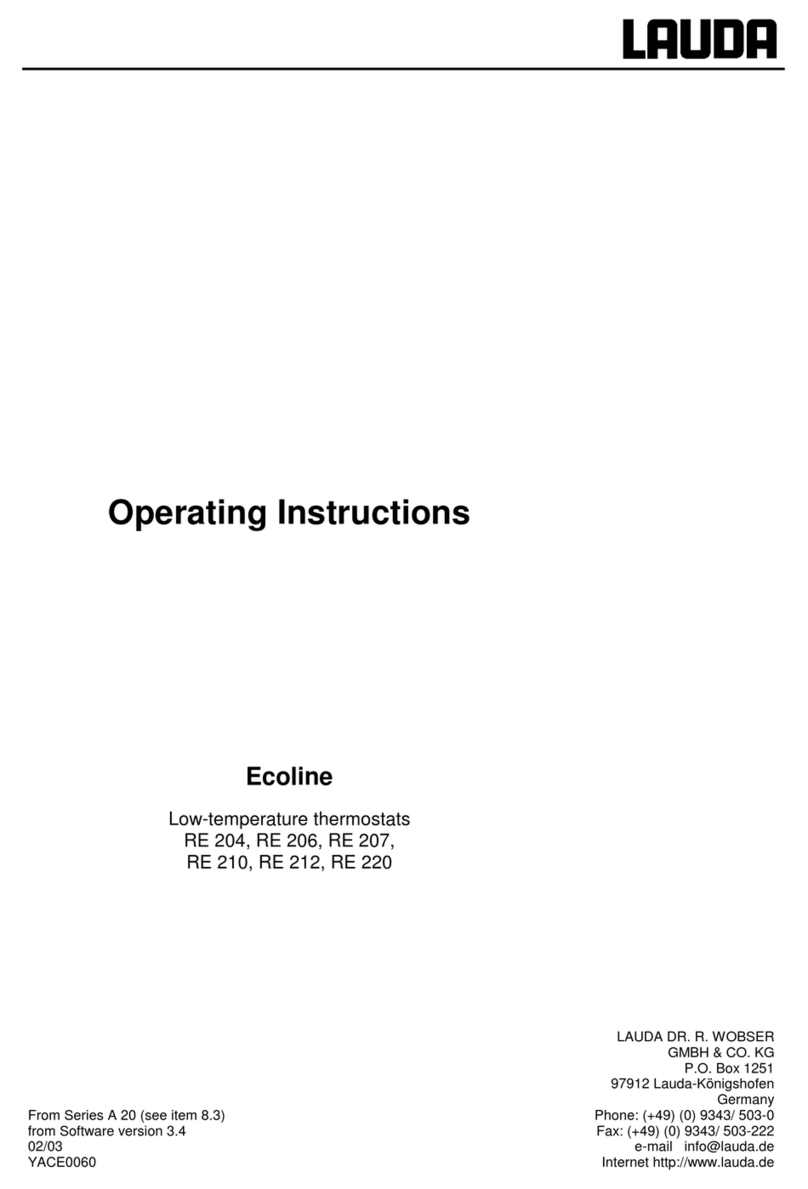
ECO GOLD
28.04.10/ YACE0088 Table of contents 5
7.8.2 Creating or changing a program (editing) ..................................................................................................53
7.8.3 Starting the program....................................................................................................................................56
7.8.4 Interrupting, continuing or terminating the program..................................................................................56
7.8.5 Defining the number of program loops (Loops) ..........................................................................................57
7.9 CONTROL PARAMETERS........................................................................................................................................58
7.9.1 Internal control variable (internal temperature sensor)..............................................................................58
7.9.2 External control variable.............................................................................................................................60
7.9.2.1 Setting the correcting quantity limit.........................................................................................................62
7.9.2.2 Procedure for setting the control parameters for external control............................................................63
8INTERFACE MODULES.........................................................................................................................................64
8.1 INSTALLATION OF MODULES.................................................................................................................................64
8.2 MENU STRUCTURE OF THE MODULES....................................................................................................................66
8.3 ANALOGUE MODULE.............................................................................................................................................67
8.4 RS 232/485 INTERFACE MODULE..........................................................................................................................68
8.4.1 Connecting lead and interface test RS 232..................................................................................................68
8.4.2 RS 232 protocol ...........................................................................................................................................69
8.4.3 RS 485 connecting lead................................................................................................................................69
8.4.4 RS 485 protocol ...........................................................................................................................................70
8.5 USB INTERFACE ...................................................................................................................................................71
8.5.1 Description ..................................................................................................................................................71
8.5.2 Installation of the USB driver......................................................................................................................71
8.5.3 Connecting the thermostat to the PC...........................................................................................................72
8.5.4 Where is the ECO Virtual COM Port? ........................................................................................................74
8.6 COMMANDS AND ERROR MESSAGES APPLICABLE TO THE RS 232/485 INTERFACE MODULE AND TO THE USB
INTERFACE........................................................................................................................................................................76
8.6.1 Write commands (data issued to the thermostat).........................................................................................76
8.6.2 Read commands (data request from the thermostat) ...................................................................................77
8.6.3 Error messages............................................................................................................................................79
8.6.4 Driver software for LABVIEW®..................................................................................................................79
8.7 CONTACT MODULE ...............................................................................................................................................80
8.7.1 Contact module LRZ 914 with 1 input and 1 output....................................................................................80
8.7.2 Contact module LRZ 915 with 3 inputs and 3 outputs.................................................................................81
9MAINTENANCE.......................................................................................................................................................82
9.1 ALARMS,WARNINGS AND ERRORS........................................................................................................................82
9.1.1 Overtemperature protection alarm and overtemperature protection check ................................................82
9.1.2 Low level protection alarm and low level protection check.........................................................................83
9.2 CLEANING ............................................................................................................................................................84
9.3 DEVICE STATUS ....................................................................................................................................................84
9.3.1 Error store...................................................................................................................................................85
9.3.2 Device data..................................................................................................................................................85
9.3.3 Software version ..........................................................................................................................................85
9.3.4 Displaying and changing the device type.....................................................................................................86
9.3.5 Displaying serial numbers...........................................................................................................................86
9.4 SERVICING AND REPAIR........................................................................................................................................87
9.4.1 Servicing intervals to VDI 3033...................................................................................................................87
9.4.2 Inspecting the heat transfer liquid...............................................................................................................87
9.4.3 Cleaning the condenser................................................................................................................................87
9.5 DISPOSAL INFORMATION ......................................................................................................................................88
9.5.1 Disposal of the coolant ................................................................................................................................88
9.5.2 Disposal of the packaging............................................................................................................................88
9.6 ORDERING REPLACEMENT PARTS..........................................................................................................................89
10 ACCESSORIES.........................................................................................................................................................90
11 TECHNICAL DATA AND GRAPHS......................................................................................................................92
12 INDEX ........................................................................................................................................................................99
CONFIRMATION……………………………………………………………………………………………………….101
